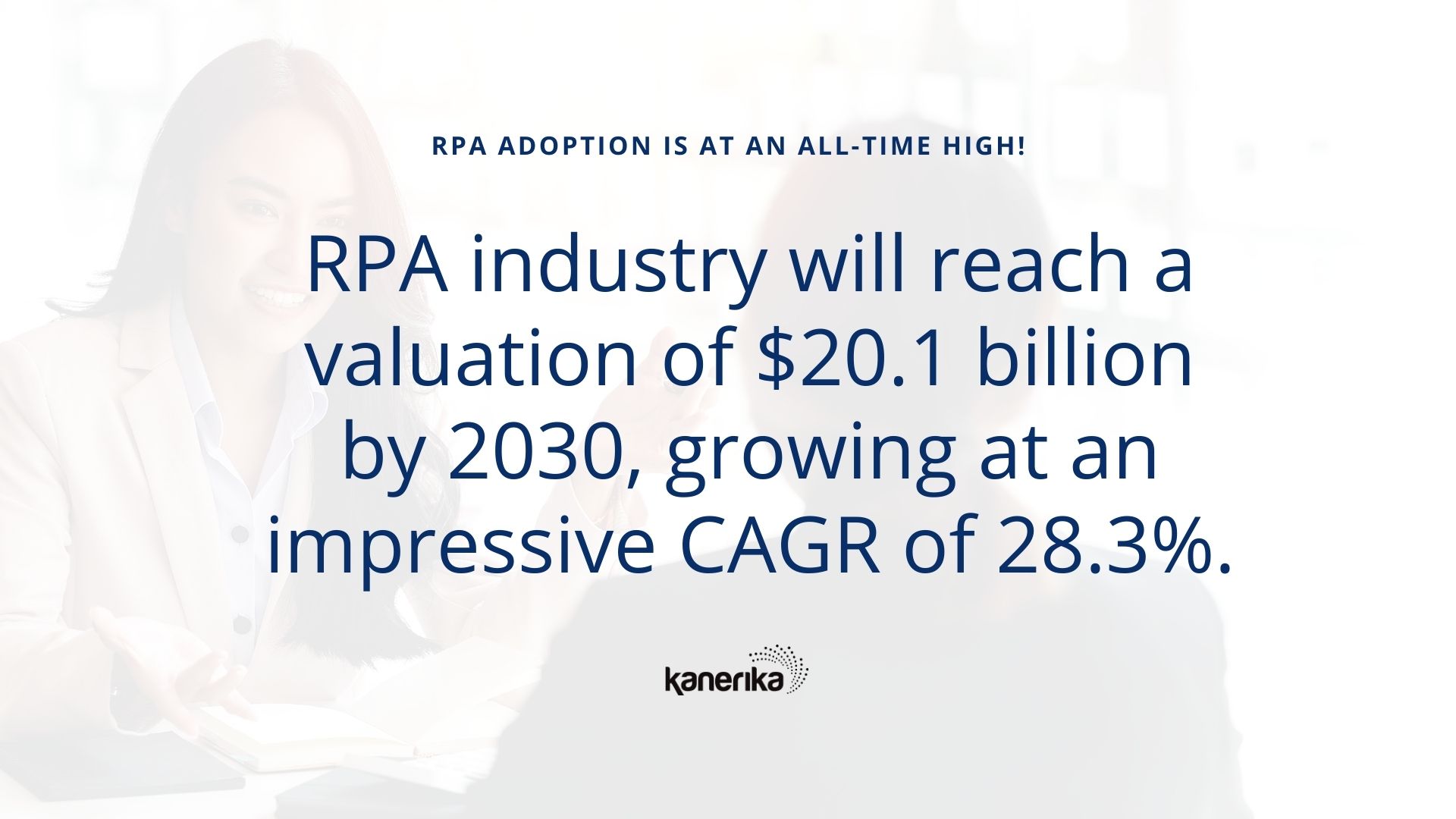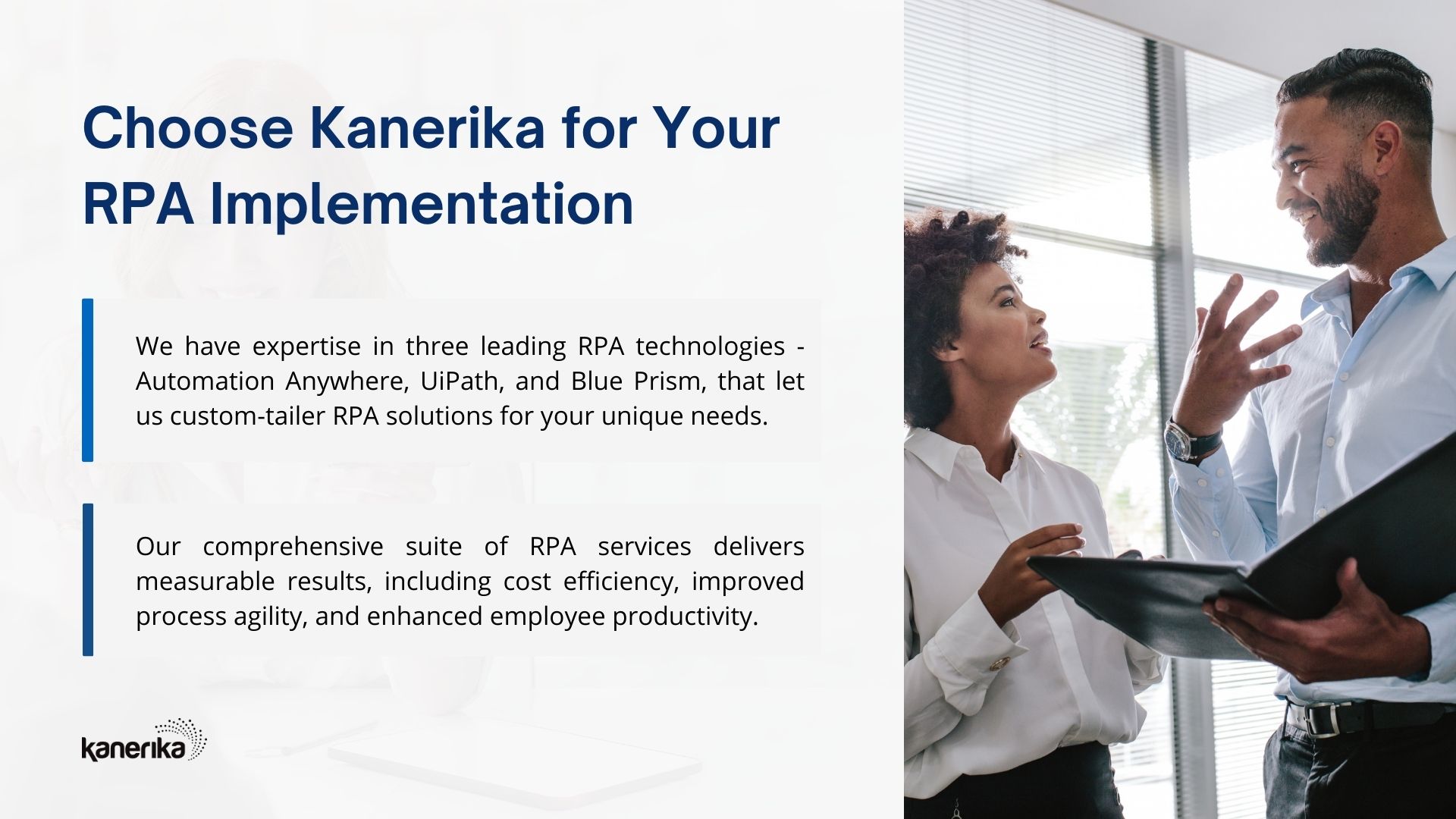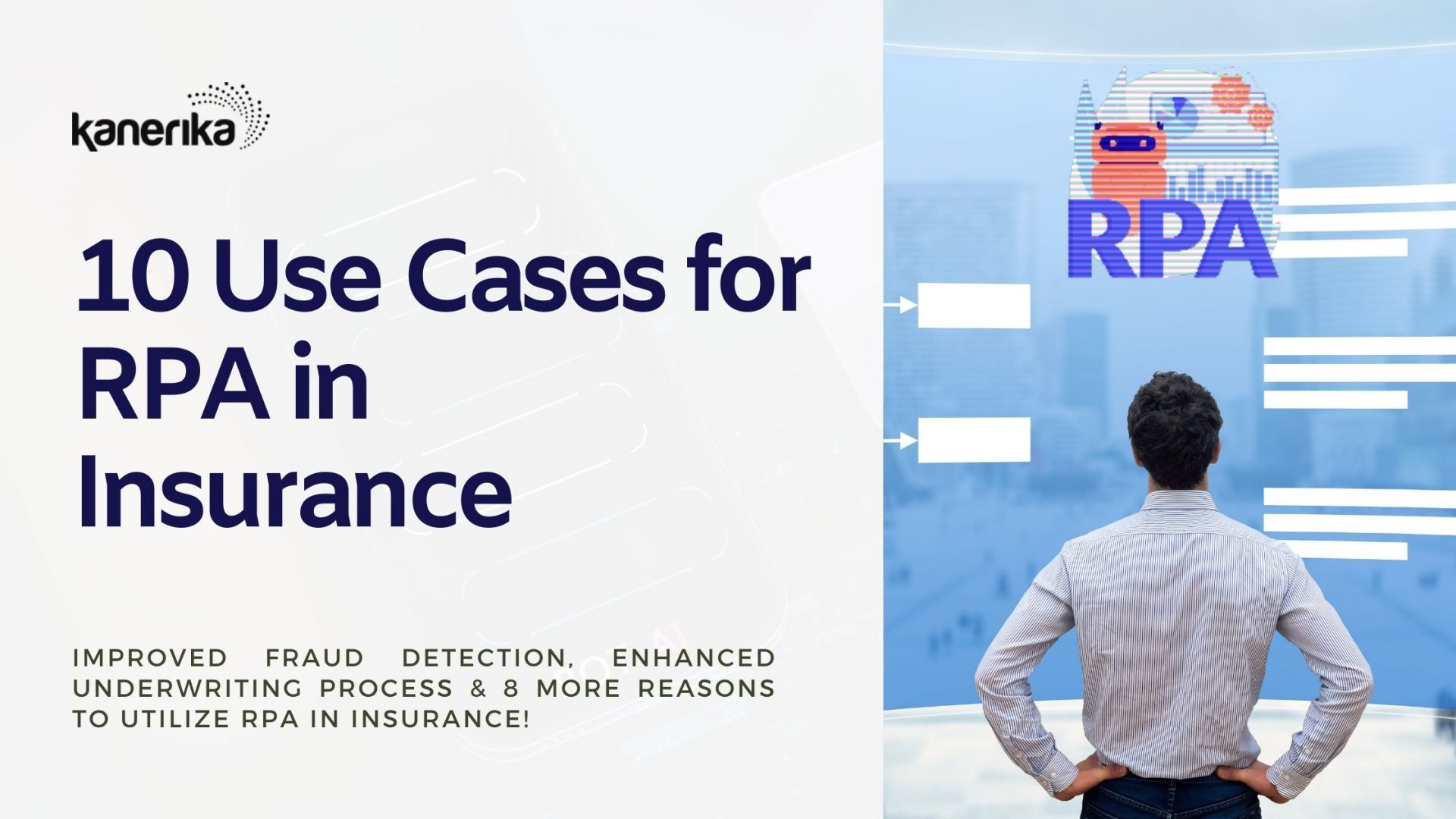Paul Daugherty, Accenture’s CTO, once insightfully remarked, “When we candidly assess the strengths of human and machine workers, and their collaborative potential, a realm of unprecedented possibilities unfolds.”
This sentiment forms the bedrock of Robotic Process Automation (RPA).
While humans are exceptional innovators, we are inherently social creatures designed to engage, pursue interests, and rest. We cannot work 24×7 without breaks. Herein lies the unique advantage of RPA.
RPA is a sophisticated software technology that enables the creation and management of software robots. These robots emulate human actions when interacting with digital systems and software. They perform tasks with speed and consistency that surpasses human capabilities, operating tirelessly without needing breaks or rest.
This proves particularly beneficial in data-intensive sectors such as insurance, which cater to millions of consumers. RPA in insurance automates rule-based tasks and standard operating procedures that do not require decision-making or strategic thinking. In today’s article, we will explore how RPA will help in the growth of the insurance industry.
RPA in Insurance: A Comprehensive Growth Analysis

According to a press release by Gartner, RPA witnessed the highest growth rate among all segments of the worldwide enterprise software market in 2018. Nearly five years later, the adoption rate of RPA continues to surge. Industry experts predict that the RPA market will reach a valuation of $20.1 billion by 2030, growing at an impressive CAGR of 28.3%.
Accenture estimates that over the next five years, there is a potential risk of $170 billion in premiums as customers switch carriers due to dissatisfaction with the claims process. Underwriters are currently spending 40% of their time on non-core activities, resulting in an estimated efficiency loss of $85-$160 billion within the same period.
However, the maturation of AI-powered RPA in insurance and significant cost reductions over the past five years have enabled insurers to extract increasing value from its implementation.
Also Read – Automation In Insurance: Use Cases, Benefits, and Strategies
RPA in Insurance: 10 Use Cases for Businesses
RPA has emerged as a revolutionary game-changer in the insurance industry, bringing transformative changes that enhance operational efficiency and improve customer experience. It offers numerous benefits to both insurance companies and policyholders. Let’s delve into some unique use cases of RPA in insurance:
1. Streamlined Claims Processing
The impact of RPA on claims processing is truly remarkable. By leveraging advanced technologies like Natural Language Processing (NLP) and Optical Character Recognition (OCR), RPA accelerates the claims process by up to 75% compared to human counterparts. This automation reduces errors, detects fraudulent claims, and ensures faster payouts, prioritizing a customer-centric approach.
2. Efficient Underwriting Processes
RPA has revolutionized underwriting by integrating Artificial Intelligence (AI) and Machine Learning. It automates critical tasks such as filling data fields, accessing internal and external data sources, evaluating loss runs, analyzing customer histories, and providing pricing options. This streamlining enables prompt customer decision-making and frees up underwriters to handle more complex tasks.
3. Ensuring Regulatory Compliance
RPA plays a pivotal role in ensuring regulatory compliance within the insurance industry. By automating tasks like client research, customer data validation, compliance report generation, and data security operations, RPA standardizes documentation and audit trails, minimizing errors and enhancing efficiency.
4. Improved Fraud Detection
RPA, coupled with AI and ML, has significantly improved the fraud detection capabilities of insurance companies. By automating cross-referencing claims data against fraud indicators and patterns, RPA can identify potential fraudulent activities with a high degree of accuracy. This not only protects the company’s bottom line but also ensures a fair and trustworthy environment for all policyholders.
5. Enhanced Sales and Distribution
RPA simplifies sales and distribution processes in the insurance sector. Automation tasks include legal and credit checks, sales record creation, and compliance activities. By automating these tasks, RPA enables smoother workflows, ensuring timely deliveries and improving customer satisfaction.
6. Efficient Finance and Accounts Management
The finance and accounts departments greatly benefit from RPA automation. With the ability to process high volumes of data accurately, RPA bots perform tasks such as clicks, keystrokes, template autofill, report generation, and push notifications with minimal human intervention. This ensures error-free customer service and enhances overall efficiency.
7. Streamlined Policy Administration
RPA automates transactional and administrative activities involved in policy administration, such as credit control, tax calculations, regulatory compliance, and accounting settlements. These automation processes span rating, quoting, binding, issuing, renewing, and endorsing policies, streamlining operations for insurance companies.
8. Seamless Integration of Legacy Applications
RPA bridges the gap between legacy applications and modern technology ecosystems through UI automation. By smartly fitting into existing technological infrastructure and workflows, RPA enables insurers to leverage legacy systems efficiently.
9. Expedited Policy Cancellation
RPA significantly expedites policy cancellation, overcoming challenges associated with multiple document formats and transactional tasks. By automating tasks like cancellation date tallying, inception date verification, and policy term calculations, RPA ensures faster resolution for policyholders.
10. Swift Query Resolution
RPA enables insurers to respond promptly to customer queries using predefined rules and Natural Language Processing (NLP) technology. RPA bots interpret incoming calls and emails, resolving simple queries without human intervention, leading to faster and more efficient customer service.
Kanerika’s RPA Partnerships for Insurance Companies
As the insurance industry continues to evolve, RPA has become an indispensable asset in the insurance sector, revolutionizing operations and shaping the industry’s future. Let’s explore some leading RPA tools and technologies that Kanerika has partnered with.
Automation Anywhere: A Powerhouse RPA Tool
Automation Anywhere has emerged as one of the leading RPA tools in the market. With its powerful capabilities, including natural language understanding and the ability to process unstructured data, it transforms how enterprises operate.
The Automation Anywhere architecture comprises three components: Control Room, Bot Creator, and Bot Runner. This robust tool automates complex tasks, reduces manual data entry errors, improves worker productivity, and saves costs in labor, energy, and time. It offers centralized deployment and control systems, making it an indispensable asset for managing, monitoring, and scaling bots across business functions.
UiPath: Driving Scalability and Efficiency
UiPath is another prominent RPA tool known for its scalability and ease of use. Its architecture comprises three product suites: UiPath Studio, UiPath Robot, and UiPath Orchestrator. With UiPath Studio, users can build automation workflows using pre-built activities while UiPath Robot executes the designed workflows.
UiPath Orchestrator ensures seamless execution of automation workflows across multiple systems simultaneously. UiPath excels in desktop automation, remote applications, data handling techniques, and writing logical algorithms. This tool streamlines mundane back-office functions, increases accuracy, and enables automation across various industries, including finance, healthcare, manufacturing, and retail.
Blue Prism: Pioneer of RPA
Blue Prism, a UK-based product development company, is widely recognized as a pioneer in Robotic Process Automation. Their tools automate clerical back-office processes and offer a “Digital Workforce” that replicates human operations. Its architecture comprises Process Studio and Object Studio.
Blue Prism’s advantages lie in its quick implementation, user-friendliness, robust analytics suite, and the ability to automate backend operations. It is widely adopted in sectors such as finance, communications, healthcare, and the public sector.
Kanerika’s RPA Implementation: A Game-Changer for Insurance Companies
In the insurance industry, traditional fraud detection methods often lead to significant business losses. Estimates by The Coalition Against Insurance Fraud (CAIF) show total losses from insurance fraud across the US are $308 billion. One insurance company grappled with these challenges, with manual processes hindering data analysis and leaving it vulnerable to fraudulent claims. The need for a robust, efficient solution was urgent.
Enter Kanerika. Our AI-driven integrated solutions offered a transformative approach. Implementing Robotic Process Automation (RPA), we leveraged predictive analytics, AI, Natural Language Processing (NLP), and image recognition to revolutionize the company’s operations. Our advanced predictive models and deep anomaly detection capabilities enabled early fraud detection, reducing loss ratios and ensuring swift straight-through processing.
The results were transformative. Implementing our AI/ML-driven RPA solutions led to a 25% improvement in operational efficiency and a 36% increase in cost savings. Furthermore, the claim processing time was reduced by 20%, enhancing customer satisfaction and trust.
With Kanerika’s expertise, insurance companies can strengthen fraud detection, enhance customer service, and optimize operations. The seamless integration of ML and RPA enables data-driven decision-making, resulting in improved efficiency, substantial cost savings, and increased customer satisfaction.
Kanerika: Your Perfect RPA Implementation Partner

At Kanerika, we are committed to providing scalable and sustainable automation solutions that optimize your insurance operations. Our comprehensive suite of RPA services delivers measurable results, including cost efficiency, improved process agility, and enhanced employee productivity. We partner with insurance companies to ensure seamless implementation, expert support, and ongoing maintenance.
With platform expertise in Automation Anywhere, UiPath, and Blue Prism, proven experience in automating over 150 processes, and certified experts, we deliver tailored RPA solutions for insurance companies, driving efficiency and customer satisfaction.
Embrace RPA with Kanerika to transform your operations. Schedule a consultation with us today!
FAQ
How does RPA facilitate the integration of legacy applications in the insurance industry?
What benefits does RPA bring to finance and accounts management in insurance companies?
In what ways does RPA simplify sales and distribution processes in insurance?
How has RPA improved fraud detection in insurance companies?
How does RPA streamline policy administration in the insurance sector?
How does Blue Prism stand out as an RPA tool in the insurance sector?
How does RPA benefit policyholders in the insurance industry?
How does RPA address challenges in the insurance industry, such as claims processing and underwriting?
Follow us on LinkedIn and Twitter for insightful industry news, business updates and all the latest data trends online.









